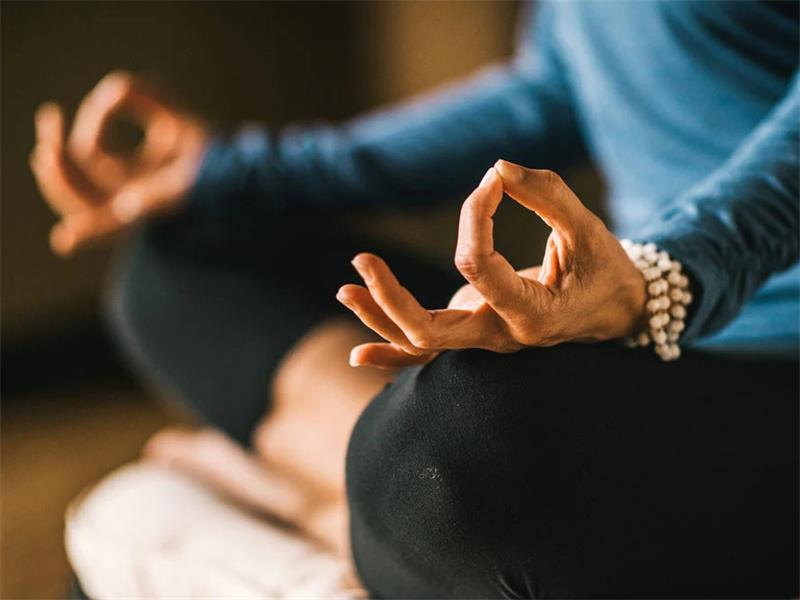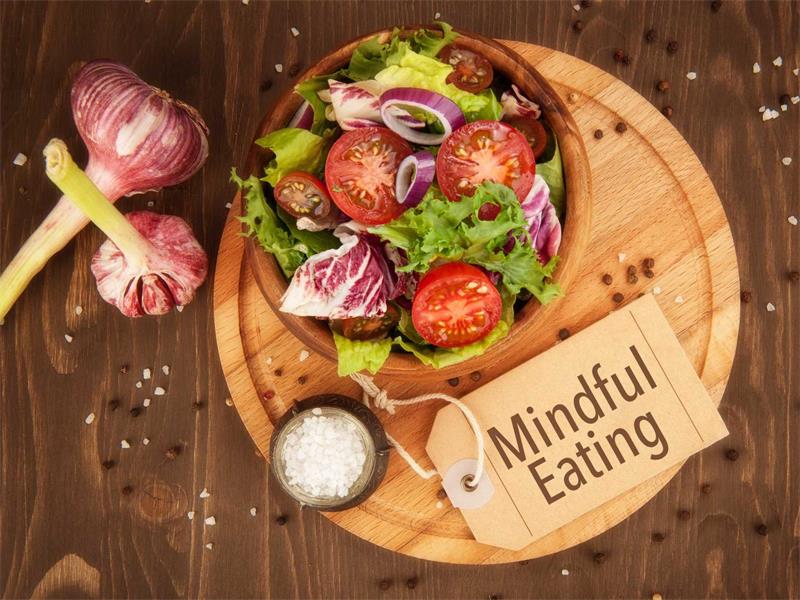Contents
- 1 Introduction
- 2 Basic Tips for Improving Balance and Stability
- 3 Lifestyle Changes to Improve Balance and Stability
- 4 Advanced Techniques for Improving Balance and Stability
- 5 Common Mistakes to Avoid When Improving Balance and Stability
- 6 Conclusion
Introduction
The Importance of Balance and Stability in Daily Life
Balance and stability might not be something you think about on a daily basis, but they play a crucial role in your overall health. Good balance and stability help you move efficiently, maintain proper posture, prevent injury, and improve athletic performance.
As you get older, balance becomes even more important to reduce the risk of falls. Everyday activities like walking upstairs or carrying groceries require good balance.
Poor balance can lead to falls that can cause serious injuries such as broken bones or head trauma. Even if you don’t fall, poor balance can cause strain on your muscles and joints leading to pain and discomfort.
The Benefits of Improving Balance and Stability
Improving your balance and stability has numerous benefits beyond preventing falls. It can improve your athletic performance whether you’re playing sports or just trying to stay active.
Better stability means better form which translates into better results. Better posture is another result of improved balance.
When your muscles are working together efficiently it’s easier for them to hold your body in proper alignment which reduces strain on joints and muscles that can lead to pain over time. Improving your balance also improves coordination which leads to better reaction times.
This is especially important for athletes but also for everyday tasks like catching yourself before tripping over something. In the next sections, we will discuss ways to improve your balance and stability through basic tips, exercises, lifestyle changes, advanced techniques as well as common mistakes to avoid when improving these skills.
Basic Tips for Improving Balance and Stability
Practice Standing on One Foot
One of the simplest ways to improve your balance is by practicing standing on one foot. Start with your feet hip-width apart and shift your weight onto one foot. Slowly lift the other foot off the ground and hold for 10-15 seconds before switching to the other foot.
Repeat this exercise for a few minutes each day, gradually increasing the time you spend standing on one foot. You can also try closing your eyes while standing on one foot to further challenge your balance.
Engage Your Core Muscles
Another important factor in improving balance is engaging your core muscles. Your core muscles include your abdominals, lower back muscles, and hip muscles. Engaging these muscles helps stabilize your body and prevent falls or injuries.
To engage your core, stand up tall with good posture, draw in your lower belly towards your spine, and squeeze your glutes together slightly. Hold this position while performing exercises that challenge balance.
Use a Stable Surface for Support
When performing exercises that challenge balance such as standing on one foot or doing yoga poses like tree pose, it’s important to use a stable surface for support. This can be a wall or a chair that you can hold onto if you lose balance or need help getting into a position. As you get more comfortable with these exercises over time, you can gradually reduce how much support you rely on until you’re able to perform them without any assistance.
Incorporating these basic tips into your daily routine can make a big difference in improving your overall stability and reducing the risk of falls and injuries. Remember to start slowly and gradually increase the intensity of these exercises as you become more comfortable with them over time.
Exercises to Improve Balance and Stability
Yoga poses such as tree pose, warrior III, and eagle pose
Yoga is a great way to improve your balance and stability. Practicing yoga helps you develop focus, concentration, and mindfulness, all of which are essential for maintaining balance. Tree pose is a classic yoga pose that requires you to stand on one leg while balancing your body weight.
This pose strengthens your legs, and core muscles, and improves your overall body stability. Another great yoga pose for balance is Warrior III.
In this pose, you stand on one leg while extending the other leg back behind you at a 90-degree angle. You also extend your arms in front of you for balance.
This pose improves your posture and strengthens the muscles in your legs and core. Eagle Pose is another challenging yoga position that tests balance and stability.
You wrap one leg around the other leg while balancing on one foot. The arm position also adds to the challenge as they cross over each other in front of the chest.
Pilates exercises like single-leg circles, roll-ups, and the plank
Pilates exercises are great for improving core strength which leads to improved balance overall. Single-leg circles is an exercise that requires you to lie on your back with one leg extended up towards the ceiling while making controlled circular motions with it in various directions working against gravity.
Roll-ups are another excellent Pilates exercise that targets both abdominal strengths as well as spinal flexibility by starting lying flat on a mat then curling up vertebrae by vertebrae reaching forward aiming to touch toes with fingers or palms down if possible before lying back down slowly rolling down each bone until flat again. The plank is a staple Pilates exercise that targets multiple muscle groups simultaneously including shoulders abs lower back glutes hamstrings calves — basically everything from head-to-toe to improving stability and balance, especially in the core.
Tai chi movements like the crane stance, brush knee twist step, and wave hands like clouds
Tai Chi has been shown to help improve balance and stability as well as reduce falls in older adults. The crane stance is a basic tai chi movement that involves standing on one leg while raising the other leg up as if perched on a branch.
This motion strengthens your legs, core muscles, and improves your overall balance. The brush knee twist step is another popular tai chi movement that challenges your balance.
It involves stepping forward with one foot while twisting your torso to face in the opposite direction with arms extended then pivoting back to center before repeating on the opposite side for optimal benefit to both sides of the body. Wave Hands Like Clouds is a flowing Tai Chi exercise where you shift weight from foot to foot alternating while stretching arms out wide and then bringing them back towards the center while maintaining control throughout the entire sequence promoting better balance control from head to toe.
Lifestyle Changes to Improve Balance and Stability
Wearing Comfortable Shoes With Good Traction
When it comes to improving your balance and stability, proper footwear is essential. Wearing shoes that fit well, have good support, and offer good traction can greatly reduce the risk of slipping or falling.
Look for shoes with a non-slip sole that provides a good grip on various surfaces. Additionally, make sure the shoes fit properly and don’t slide around on your feet.
If you’re unsure about what type of shoes are best for improving balance and stability, consider consulting with a podiatrist or physical therapist. They can recommend specific brands or styles based on your needs and preferences.
Maintaining a Healthy Diet Rich in Nutrients That Support Bone Health
A healthy diet rich in nutrients such as calcium, magnesium, vitamin D, and vitamin K is important for maintaining strong bones and reducing the risk of falls. Calcium is particularly important for bone health as it helps build and maintain strong bones. Good sources of calcium include dairy products like milk and cheese, leafy greens like kale and spinach, almonds, tofu, and sardines with bones included.
Magnesium plays a role in bone formation as well as muscle function. Foods high in magnesium include spinach, almonds, wheat bran cereal, oatmeal, etc. Vitamin D helps the body absorb calcium from food sources while Vitamin K is involved in bone metabolism. Vitamin D can be obtained through exposure to sunlight while foods high in Vitamin K include leafy greens like kale, spring onions, etc.
Getting Enough Sleep to Reduce Fatigue
Fatigue can greatly impact your balance and stability by affecting your concentration levels, reaction times, etc. Getting enough sleep is an important lifestyle change that can help reduce fatigue. The National Sleep Foundation recommends adults get 7-9 hours of sleep each night. However, sleep is not just about the quantity of hours but also the quality.
To improve your sleep quality try to establish a regular sleep-wake schedule, avoid caffeine and alcohol close to bedtime, create a relaxing environment in your bedroom and avoid stimulating activities like using screens before bed. If you have difficulty sleeping, consider consulting with your healthcare provider to discuss possible solutions.
Advanced Techniques for Improving Balance and Stability
Using a Balance Board or Wobble Cushion to Challenge Your Stability
If you’re ready to take your balance and stability to the next level, try incorporating a balance board or wobble cushion into your routine. These tools challenge your core muscles and force you to engage smaller stabilizing muscles in your legs and feet.
They come in different shapes and sizes, some with adjustable levels of difficulty. To use a balance board, stand on it with both feet facing forward.
Keep your knees slightly bent and engage your core muscles. Shift your weight back and forth, side to side, or in circular motions while maintaining balance.
As you get more comfortable, try standing on one foot or closing your eyes for an added challenge. Wobble cushions are similar but can be used while sitting, kneeling, or standing.
Place the cushion under one foot or both feet while standing or sit on it with both buttocks resting on top. The unstable surface forces you to constantly adjust and engage your core muscles.
Incorporating Plyometric Exercises Like Jump Squats or Box Jumps Into Your Routine
Plyometric exercises involve explosive movements that improve power, agility, and overall athleticism. They also require good balance and stability as you land from a jump or change direction quickly.
Jump squats are a simple but effective plyometric exercise that targets the lower body while improving balance. To perform jump squats: start in a squat position with feet shoulder-width apart; jump up explosively from the squat; land softly back into the squat position; repeat for multiple reps.
Box jumps are another popular plyometric exercise that requires good balance as you jump onto a raised platform like a box or bench. To perform box jumps: choose an appropriate height platform; stand facing the box with feet shoulder-width apart; bend knees slightly and swing arms back; jump explosively up onto the box, landing softly with both feet; step or jump back down to start position; repeat for multiple reps.
Remember to start with a lower platform and focus on proper form before attempting higher heights. Plyometric exercises should always be performed on a stable surface and with proper warm-up and stretching.
Conclusion
Incorporating advanced techniques like balance boards and plyometric exercises can take your balance and stability to new heights. These tools challenge your core muscles, improve athleticism, and force you to engage smaller stabilizing muscles in your legs and feet.
Remember to always use proper form, start with lower levels of difficulty, and progress gradually over time. With consistent practice, you’ll notice improvements in your overall balance, stability, and athleticism.
Common Mistakes to Avoid When Improving Balance and Stability
Focusing too much on one area of the body instead of maintaining overall balance
One of the most common mistakes people make when trying to improve their balance and stability is focusing too much on a specific area of the body. While it’s important to strengthen your core, legs, and ankles, it’s also important to work on your overall balance. Neglecting other areas can lead to muscle imbalances and an increased risk of injury.
For example, if you only focus on strengthening your legs without also working on your core and ankle stability, you might be able to stand on one leg for a longer time but you may still struggle with balancing during everyday activities like reaching for something or walking on an uneven surface. Therefore, it’s crucial to incorporate exercises that target different areas of the body for optimal results.
Overexerting yourself without proper warm-up or stretching
Another mistake people often make when trying to improve their balance and stability is overexerting themselves without proper warm-up or stretching. Jumping into intense workouts without properly preparing your muscles can increase the risk of injury.
Before starting any exercise routine, it’s important to perform a proper warm-up that includes activities such as light cardio exercises or dynamic stretching. This helps get blood flowing through your muscles and prepares them for more intense activity.
Additionally, stretching after each workout can help prevent muscle soreness while improving flexibility. When it comes specifically to improving balance and stability, warming up should include movements that mimic the targeted exercises in order for muscles used in those exercises are activated before they go into action.
Incorporating new exercises too quickly
Another common mistake people make is incorporating new exercises too quickly without allowing their bodies enough time to adapt. As with any exercise routine or fitness program, it’s important to start slowly and gradually increase the intensity and duration of workouts. Jumping into advanced exercises without building up your strength, endurance, and balance can lead to injuries or setbacks.
It’s also important not to introduce too many new exercises at once. Adding too much variety all at once can be overwhelming for your body and make it difficult to track progress.
Instead, start with a few basic exercises and gradually add in new movements as you feel comfortable. Always listen to your body when it comes to intensity level, and don’t try to push yourself too far beyond what your abilities allow.
Conclusion
Throughout this article, we have discussed the importance of maintaining balance and stability in our daily lives. The benefits of improving these skills range from preventing falls and injuries to enhancing athletic performance.
We’ve also explored a variety of tips, exercises, and lifestyle changes that can help improve your balance and stability. Remember to start with the basics: focus on standing on one foot, engage your core muscles, and use a stable surface for support.
As you progress, try incorporating yoga poses such as tree pose or warrior III, Pilates exercises like single leg circles or the plank, or tai chi movements like wave hands like clouds. Other lifestyle changes can also make a big difference in your overall balance and stability.
Wearing comfortable shoes with good traction is important for preventing slips and falls. A healthy diet rich in nutrients that support bone health can also help keep you steady on your feet.
And finally, don’t underestimate the power of getting enough sleep to reduce fatigue! It’s important to remember that improving your balance and stability takes time and practice – you won’t see results overnight.
But by incorporating these tips into your daily routine and staying consistent with your exercises and lifestyle changes, you’ll be well on your way to feeling more confident in everything you do! So don’t give up – keep going, stay motivated, and enjoy the benefits of improved balance and stability for years to come!













